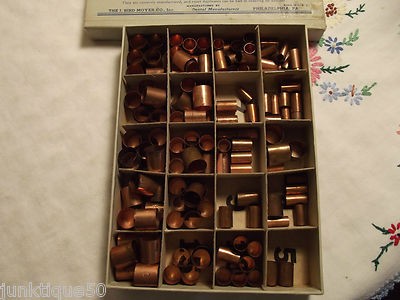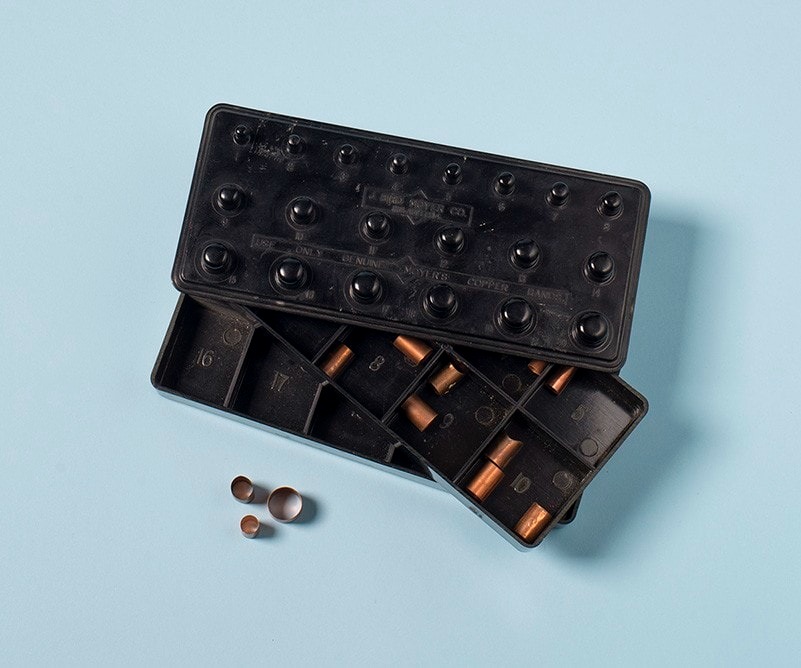In the world of dentistry, where innovation meets tradition, certain tools and materials have stood the test of time, leaving an indelible mark on the profession’s history. Among these, the Bakelite box and copper bands hold a special place, symbolizing the evolution of dental practices and the ingenuity of dental professionals throughout the years. Let’s delve into their fascinating journey, from their origins to their enduring significance in modern dentistry.

The Birth of Bakelite
Our journey begins in the early 20th century when Leo Baekeland, a Belgian-born chemist living in the United States, revolutionized the world of materials science with his invention of Bakelite in 1907.
Bakelite, the world’s first synthetic plastic, marked a pivotal moment in industrial history, offering unparalleled versatility and durability. Baekeland’s creation stemmed from his quest to develop a moldable material that could replace natural resources like ivory and shellac.
The advent of Bakelite transformed various industries, including dentistry, where its heat-resistant and insulating properties found numerous applications. Dental professionals swiftly recognized the potential of Bakelite for crafting dental instruments and organizing small tools. The Bakelite box emerged as a staple in dental practices worldwide, providing a secure and convenient storage solution for delicate instruments.
The Rise of Copper Bands
Simultaneously, another innovation was shaping the landscape of dentistry: the use of copper bands. Dating back to ancient times, dentistry has always sought solutions for restoring and preserving oral health. Copper, with its antimicrobial properties and malleability, presented an ideal material for crafting dental appliances.

Copper bands gained prominence in the late 19th and early 20th centuries, coinciding with advancements in dental techniques and materials. Dentists began employing copper bands for various procedures, particularly in restorative dentistry.
These bands served as molds for shaping dental restorations, such as fillings and crowns, ensuring precise fits and optimal patient outcomes.
Bakelite Memories from Larry Cohen
Larry Cohen, Benco Dental’s Chief Customer Advocate, paints a vivid picture of a time when copper bands reigned supreme in dental practices. Long before the era of retraction cord and CAD/CAM systems, dentists turned to copper bands and compound for capturing detailed impressions.
“The Bakelite box here — the proverbial Forrest Gump–style box of chocolates — was the common way to store these copper bands in postwar operatories” Cohen recalls. “My childhood job at Benco Dental, which I began when I was 10, was to take our annual copper-band inventory. It took me hours. Ugh!”
Despite the laborious process, the technique yielded clean and detailed impressions that reflected the prepared tooth and margins with precision. Dentists would carefully select a copper band that snugly fit over the prepared tooth, fill it with warm compound, and push it into place.
The result? A meticulously crafted impression that laid the foundation for crown and bridge restorations.

So Long, Copper Bands: The Evolution of Dental Practice
As dentistry evolved from a rudimentary craft to a sophisticated science, the role of Bakelite boxes and copper bands evolved in tandem. The streamlined organization facilitated by Bakelite boxes enhanced efficiency in dental procedures, allowing practitioners to focus more on patient care. Meanwhile, copper bands continued to play a crucial role in restorative dentistry, adapting to the changing needs of dental professionals and their patients.
Throughout the 20th century, dental technology advanced rapidly, introducing new materials and techniques that reshaped clinical practices. While Bakelite boxes remained a steadfast presence in dental offices, the use of copper bands underwent refinement and adaptation to accommodate modern restorative materials such as composite resins and ceramics.
While the copper-band technique may seem antiquated in today’s era of rapid technological advancement, Cohen acknowledges its enduring legacy. Despite the advent of modern materials and techniques, a handful of dentists still embrace the copper bands technique, akin to what Cohen calls “majestic dinosaurs on their way to extinction.” This homage to tradition speaks volumes about the resilience of time-tested methods and the reverence for craftsmanship passed down through generations of dental professionals.
Contemporary Applications
In the 21st century, dentistry stands at the forefront of technological innovation, with digital imaging, 3D printing, and minimally invasive procedures revolutionizing patient care. Despite these advancements, the legacy of Bakelite boxes and copper bands endures, serving as reminders of dentistry’s rich history and enduring traditions.
While modern materials and digital technologies have largely supplanted Bakelite and copper bands in everyday dental practice, they carry weighty historical significance. Dental professionals worldwide continue to draw inspiration from the ingenuity of past generations, honoring the legacy of those who paved the way for today’s advancements.
Bakelite, Bands, and Beyond
The history of dentistry is a testament to human ingenuity and perseverance, with each innovation building upon the foundations laid by predecessors. The humble Bakelite box and copper bands may seem insignificant in the grand scheme of dental technology, but their contributions to the profession’s evolution are undeniable.
As we reflect on their journey from the laboratories of early 20th-century chemists to the modern dental clinic, we gain a deeper appreciation for the craftsmanship and dedication that have shaped dentistry into what it is today. While the tools and materials may change, the commitment to excellence and patient care remains constant, ensuring that the legacy of Bakelite boxes and copper bands endures for generations to come.
To learn all about the hidden history of dentistry and all the tools that brought us to where we are today, read more at the Daily Floss.




